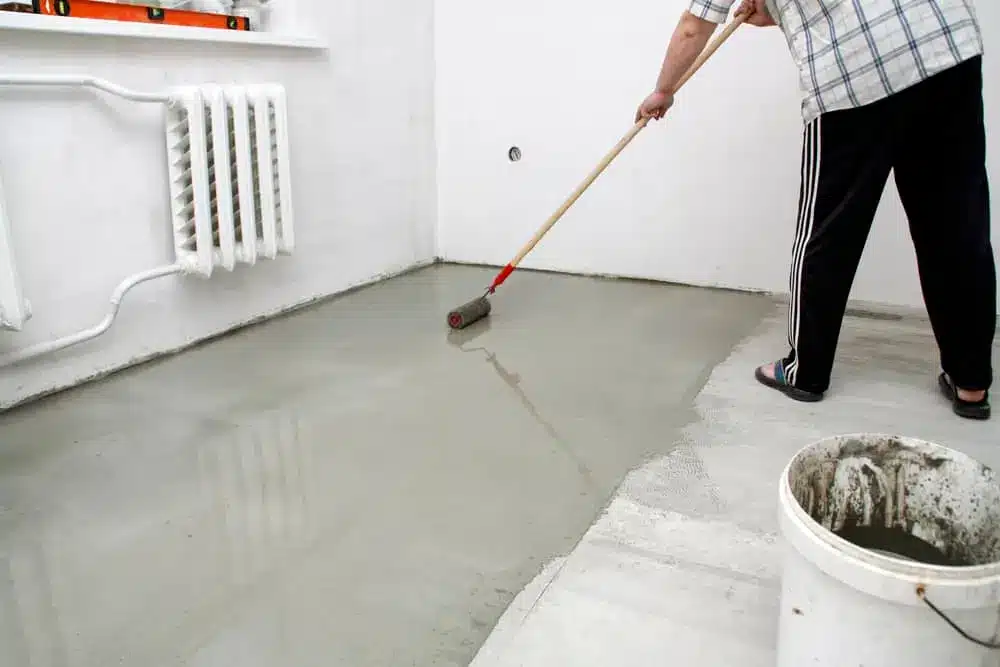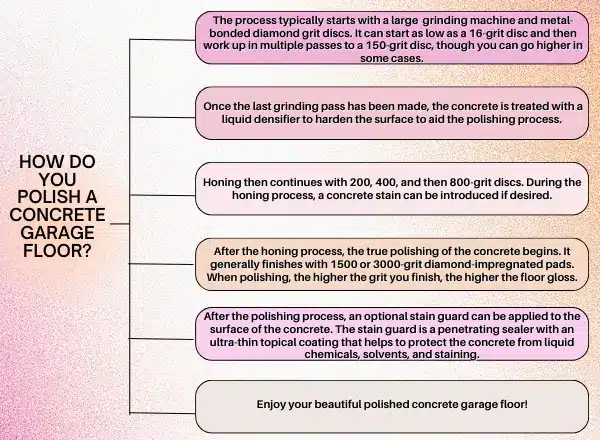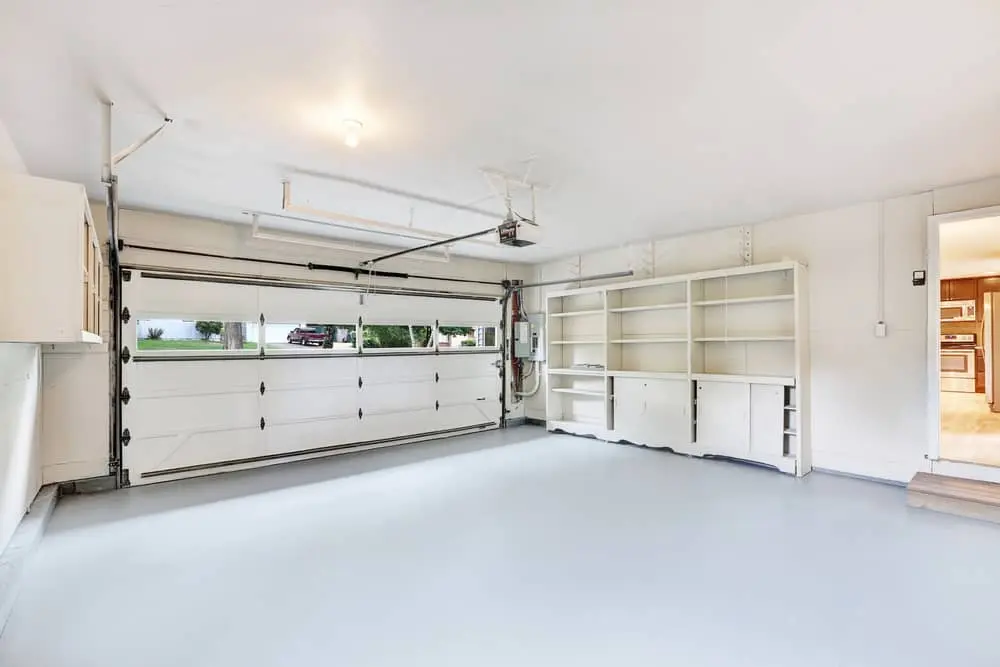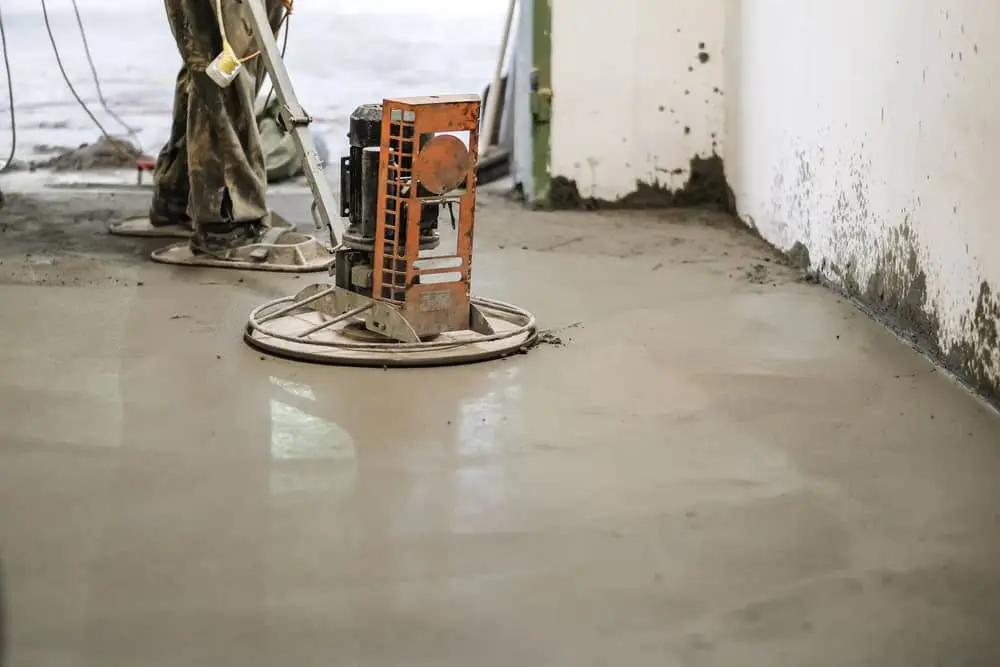It is undeniable that a polished concrete garage floor is one of the most attractive flooring options out there, and its shine almost always catches attention—the natural concrete look with a mirror finish is definitely stunning, but are polished concrete floors good for a garage?
As an option, you can add a concrete stain and a few well-placed decorative saw cuts during the polishing process, and you can have a custom look and design that will be the envy of your friends and neighbors.
You may already be aware of some of the features and benefits listed for polished concrete. Some benefits include stain resistance, good light reflectivity due to the glossy finish, easy cleaning and maintenance, a surface that is not easily damaged, and long life since the flooring never needs to be replaced. It is typically less slippery when wet than some other garage flooring options.
With all the aesthetic and practical benefits that this flooring option brings to the table, we still wonder if polished concrete floors are ideal for a garage.
Polished concrete is lauded for its compressive strength, beautiful look, and resistance to toxic chemicals and substances. Polished concrete flooring is ideal for garages that will not be subjected to materials of extreme pH substances and harsh chemicals. It is also suitable because of its light reflectivity, usually required in a garage.

However, since polished concrete might need to be re-polished occasionally, it might not be suitable for a garage that is meant to be used on a 24/7 basis. If going the polished concrete route, one should be able to make provisions for regularly cordoning off the parking area.
The simple trowel finish is the most common way to finish concrete in a shed. After the concrete is laid in the forms, it is screed (leveled) and then fine-leveled with a trowel. A power trowel makes the process quicker, but care must be taken to ensure the concrete is set up enough to avoid causing a wavy surface that your customer wouldn't be satisfied with.
The more concrete that is troweled, the smoother the finish becomes. Repeated troweling (burnishing) can smooth down the concrete, resulting in a slippery surface in a shed or garage. You don't want your client sliding into the back wall the first time they pull into their new garage on a rainy day--not to mention the dangers of an oil spill.
Developing an exposed aggregate floor is an advanced skill, but various types of aggregates and aggregate combinations can develop unique floors. To achieve an exposed aggregate finish, the aggregate is uniformly broadcast onto the concrete surface after the concrete is cast and screeded. Screeding or tamping tools to work the aggregate into the concrete surface.
A final pass with a bull float ensures all the aggregate is covered using the concrete paste. When the concrete has cured, the top layer is ground off, revealing the aggregate. Aggregates used to develop this type of floor include quartz, river rock, granite, limestone, and marble.
Concrete is an economical building material. You can achieve the look of brick, flagstones, tile, slate, or other more costly flooring materials by pressing a design into fresh concrete. After applying the color and sealant, the concrete can look like other materials.

Concrete is porous; it tends to absorb chemicals, water, and other materials it comes into contact with. Exposure to chemicals, water, and general use can damage the concrete. Finishing a concrete floor in a shed or garage with a penetrating sealer will protect it from stains and help preserve the look of a new floor.
Polishing concrete is more complex than running a large buffing machine to shine it up on bare concrete. It is a series of steps, including grinding, honing, and polishing.
The process typically starts with a large planetary grinding machine using metal-bonded diamond grit discs.
It can start as low as a 16-grit disc and then work up in multiple passes to a 150-grit disc, though you can go higher in some cases. Each successive disc removes the scratches and grooves created by the previous diamond disc.
Which grit disc you start with is determined by how much aggregate you want to be exposed (if any) and what kind of shape the concrete is in initially. In other words, are there defects to be removed, waves in the concrete that need leveling, old coatings present, etc.?

The grinding opens up the pores of the concrete. Once the last grinding pass has been made, the concrete is treated with a liquid densifier to harden the surface to aid the polishing process. A densifier may be added more than once, depending on how hard or soft the concrete may be. Densifiers also aid in preventing water penetration and help resist concrete staining.
At this point, the honing process begins with resin-bonded diamond discs. Honing will give the concrete a low satin sheen that begins to shine up with each successive step. You step down a grit when you start this process.
For example, if the grinding finished with a 150-grit metal-bonded diamond disc, you would begin the honing process with a 100-grit resin-bonded disc. The first disc used in the honing process is often a transitional diamond disc.
Honing then continues with 200, 400, and then 800-grit discs. During the honing process, a concrete stain can be introduced if desired.
After the honing process, the true polishing of the concrete begins. It generally finishes with 1500 or 3000-grit diamond-impregnated pads. When polishing, the higher the grit you finish, the higher the floor gloss.
After the polishing process, an optional stain guard can be applied to the surface of the concrete. The stain guard is a penetrating sealer with an ultra-thin topical coating that helps to protect the concrete from liquid chemicals, solvents, and staining.
For many homeowners, the garage is a place to store things and work on projects, so aesthetics takes a back seat. But is a finished garage floor worth the investment?
If you live in a milder climate and don't do much maintenance on your vehicles other than parking them in your garage, polished concrete can do quite well if you keep the floor routinely clean.

Polished concrete turns your garage into a space that can be used for various activities. It's a non-slip, easy-clean surface for indoor games, DIY, painting, or storage. One of its many advantages is that maintenance couldn't be simpler. The surface needs to be dust-free with regular sweeping, but it requires only a gentle mopping to keep your garage floor as good as new.
If you search polished concrete garage floors, the examples you will find are typically showroom-style garages with classic cars or nice garages that look cleaner and more orderly than the inside of most homes. If you like to maintain a clean garage and enjoy the routines of doing so, polished concrete can give you years and years of service without issue.
Polished concrete floors for your garage are a reliable investment that you can make for your property. Not only does it offer aesthetic and practical benefits, but it also increases your property's value. But with so many options out there, it's easy to feel overwhelmed. That's why we're here. At Floor Doctor, we can breathe new life into your garage by installing polished concrete floors that will last a long time. Please contact us today!
